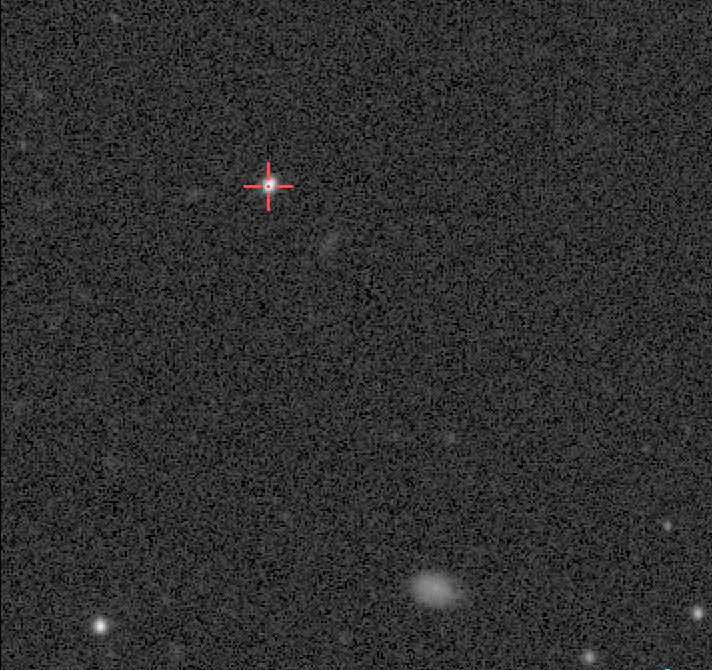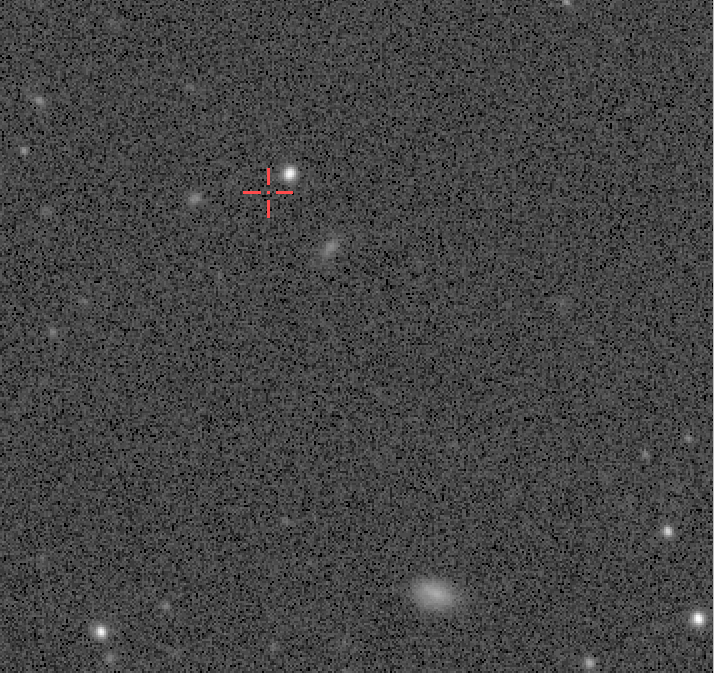| ||||||||||||||
IntroductionPrecovery is the process of finding an object in astronomical archives generally for the purpose of calculating a more accurate orbit. Calculating the orbit of an astronomical object involves measuring its position on multiple occasions: The more widely separated these are in time, the more accurately the orbit can be calculated. Accurate determination of the orbital parameters is of fundamental importance for objects like asteroids with a non-negligible probability of impacting Earth. Apophis is an excellent example of how important Precovery can be. Discovered on June 19, 2004, follow-up observations indicated a small probability (up to 2.7%) that it would strike Earth in 2029. It was not until precovery images taken in March 2004 were analyzed when the possibility of an impact on Earth was eliminated. Apophis belongs to the category of Potentially Hazardous Asteroids (PHAs). These objects are characterized by an Earth Minimum Orbit Intersection Distance(MOID) of 0.05 astronomical units (AU) or less and an absolute magnitude (H) of 22.0 or less. This "potential" to make close Earth approaches does not mean a PHA will impact Earth. It only means there is a possibility for such a threat. By monitoring these PHAs and updating their orbits, we can better predict the close-approach statistics and thus their Earth-impact threat. The same approach applies for Near Earth Asteroids (NEAs), objects whose orbits partly lie between 0.983 and 1.3 astronomical units. The Virtual Observatory (VO) is an international initiative whose main goal is to ensure an efficient access and analysis of the information hosted in astronomical archives. In the framework of the Spanish Virtual Observatory we have taken advantage of the VO standards to develop a system to easily access astronomical archives and look for PHAs and NEAs. At the moment, the public access is limited to the Sloan Digitized Sky Survey (SDSS) and the VISTA Hemisphere Survey (VHS) How to identify PHAs and NEAs in astronomical images?The procedure of identifying PHAs and NEAs relies on the comparison of images of the same region of the sky taken several minutes apart. The vast majority of the objects recorded in the images are stars and galaxies that will appear in the same position in all the images. On the contrary, NEAs are nearby objects with high relative velocities and they will appear in slightly different positions (see Figure).
Links of interest: | ||||||||||||||
| ©Spanish Virtual Observatory (SVO Privacy Policy) (Creditos) | ||||||||||||||
 |  |





